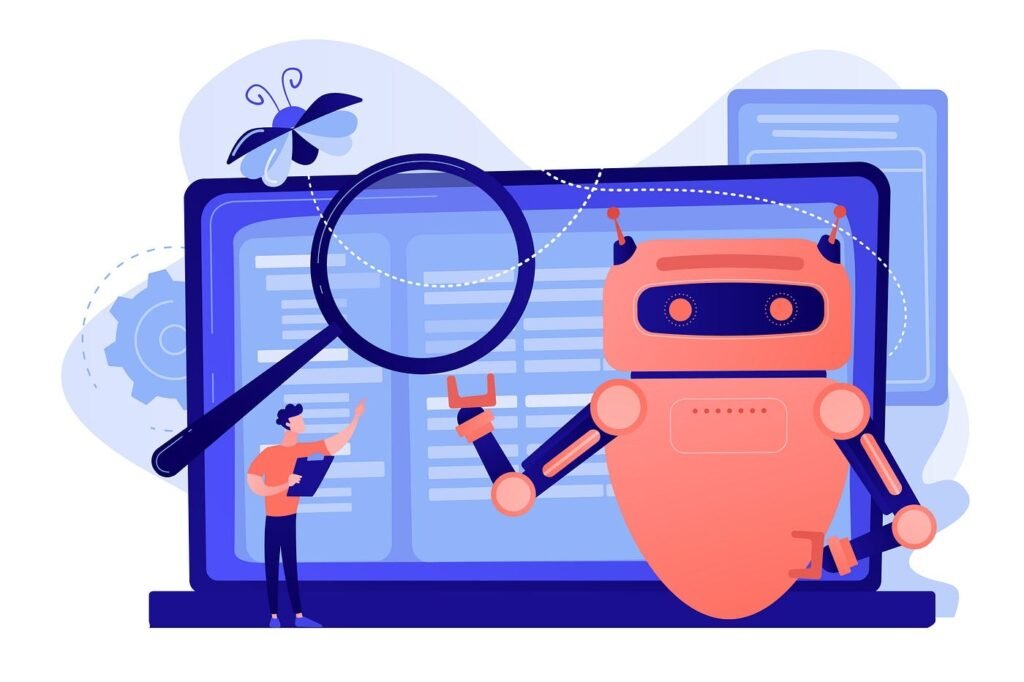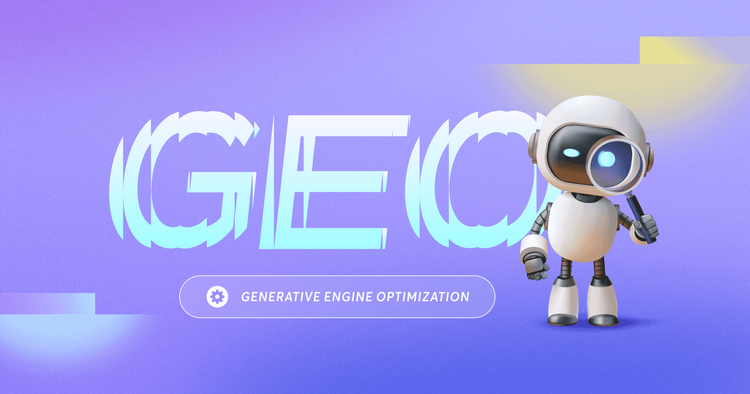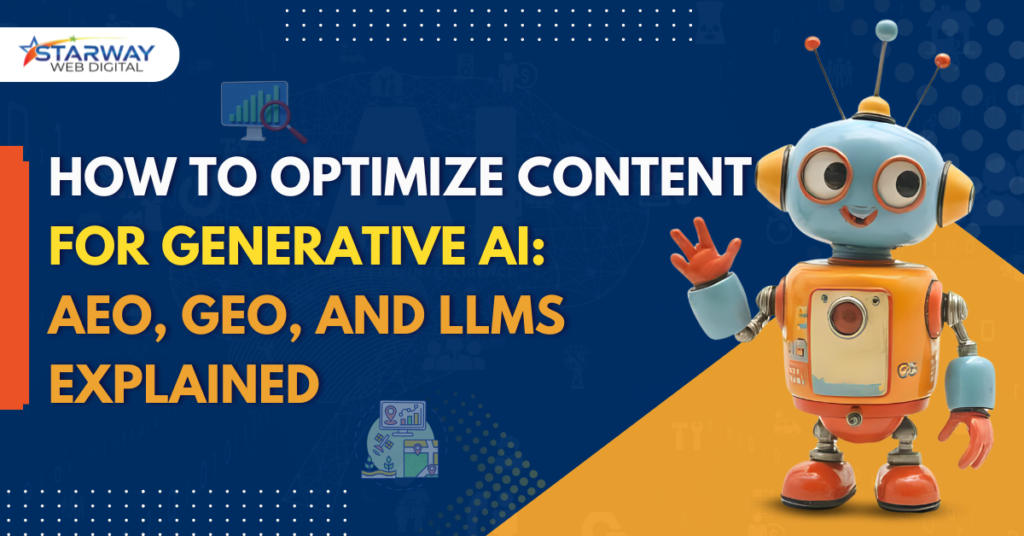The way people search has changed. Again. And this time, it’s not just a tweak to the algorithm — it’s a full-on evolution driven by Generative AI. If you want your content to stay visible, clickable, and relevant, you need to optimize content for generative AI using strategies built on AEO, GEO, and LLMs.
At Starway Web Digital, we’ve been tracking this shift closely — and helping brands adapt their content strategies to keep pace with how AI interprets, ranks, and responds to user queries.
What’s Really Changed in Search?

Search engines are turning into answer engines. Instead of sending users to a bunch of blue links, tools like Google’s SGE (Search Generative Experience) and Bing’s AI summaries now generate direct, AI-powered answers right on the results page.
That’s your competition now — not just the website next door, but the AI model summarizing your content.
AEO: Answer Engine Optimization
Answer Engine Optimization focuses on giving clear, concise answers that can be easily extracted by search engines and AI.
To implement AEO:
- Use FAQ sections with schema markup.
- Answer key questions directly under headers.
- Write first-sentence answers before diving into explanations.
- Use structured data wherever possible.
AEO is your ticket to being quoted in those rich AI summaries or featured snippets.
GEO: Generative Engine Optimization

Generative Engine Optimization is newer and even more disruptive. It’s the art of optimizing for generative engines, not just traditional ranking algorithms. These AI models don’t just crawl keywords — they synthesize ideas, scan context, and build summaries.
How to optimize for GEO:
- Focus on contextual clarity — every sentence should make sense without requiring the whole article.
- Use natural language that aligns with how people ask questions.
- Include semantic keywords and LSI terms (like “AI search,” “SGE,” “generative snippets,” etc.).
- Keep paragraphs short — LLMs love easily scannable text.
If AEO helps you get picked, GEO helps you get quoted.
LLMs: Large Language Models and Your Content
At the core of both AEO and GEO is one thing: LLMs — the large language models like GPT, Claude, and Gemini that generate the answers people see.
Optimizing for LLMs means:
- Using clear, factual language — LLMs weight clarity and trust.
- Creating topical clusters to establish authority (LLMs use context from your whole site).
- Formatting content in a Q&A style, using headers like “How,” “What,” and “Why.”
- Using schema markup and internal linking to provide machine-readable context.
LLMs aren’t “ranking” your site — they’re interpreting and summarizing it. Speak their language.
Quick Tips to Optimize Content for Generative AI

- Lead with answers — Put the TL;DR right up top.
- Use entity-rich content — Include names, tools, products, concepts (e.g., GPT-4, Google SGE, schema.org).
- Create multi-format content — Video, text, lists, bullet points. AI loves variety.
- Match search intent, exactly — If someone’s asking “How do I rank in AI summaries?”, your post better start by answering that.
- Use semantic relationships — Think like a knowledge graph, not just a keyword list.
Final Thoughts — Why This Matters for Your Business
This shift is big — and it’s happening fast. Generative AI is rewriting how users interact with your content before they ever land on your site. If your content isn’t LLM-ready, it risks being overlooked or mistranslated by AI engines.
That’s where Starway Web Digital comes in. We don’t just follow SEO trends — we engineer content strategies designed for AI-first environments. From optimizing for visibility in generative summaries to structuring your site for AI comprehension, we help your brand lead in this new search landscape.




